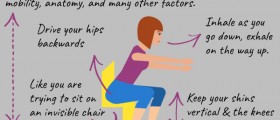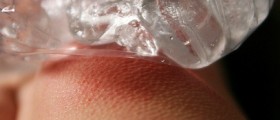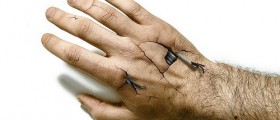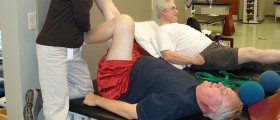
KneePain while Running
Thereare many different factors that can lead to knee pain experiencedwhile running. Typically, the problem lies in the knee joint itself,where either a ligament or tendon has been strained or the cartilagein the joint has eroded slightly. This can be a major problem forprofessional athletes and can interrupt their training or performancefor weeks or months at a time.
Theknee joint is a meeting point for 4 different bones including thefemur (thigh bone), the tibia (leg bone) and the patella (knee cap).Between the bones are small, flat pieces of cartilage that help thejoint to function correctly. Ligaments and tendons are strung overthe joint to facilitate leg movement.
VariousPainful Knee Conditions
Themost common and probably more widely known condition that causes painin the knee while running is the aptly named 'runner's knee', knownmedically as chondromalacia of the patella. This occurs when themuscles or tendons in the knee are out of balance or sync and theybecome aggravated while running. The symptoms of runner's kneeinclude cracking or popping sounds coming from the knee joint,inflammation of the cartilage in the knee joint and general pain oraching in and around the joint.
Exercisesthat strengthen the leg muscles can help to prevent this condition.Special shoes or supports for the knee joint can help if the problemdoes not lie with the muscles, but is rather a problem withoverpronation.
Tendonitisin the patella can also occur due to the patellar tendon becomingstressed, particularly because of too much use. Symptoms of thiscondition include stiffness and pain just below the patella itself,as well as possible minor swelling. Treating this condition requiresthe knee to be rested in an elevated position as much as possible andice packs or cold compresses can be applied to alleviate swelling andpain.
Whenthe cartilage in the knee, called the meniscus, becomes eroded to thepoint where moving the joint becomes painful, this is known asmeniscus degradation. This condition can become more serious if thejoint is subjected to more stress; it is therefore advised to takenote of early indications of this condition and to take appropriateaction as soon as possible, including resting the knee and perhaps adoctor consultation.
IliotibialBand Syndrome occurs when that band stretches too tightly and becomesstrained. This is usually accompanied by pain on the outside of theknee. To prevent this injury from occurring, running along flatsurfaces is advised, as well as a good stretching routine before andafter long runs.
Aswith all types of pain, early warnings must be acknowledged andaction should be taken as quickly as possible to diagnose and treatany emerging conditions that will worsen over time.

















Your thoughts on this
Loading...